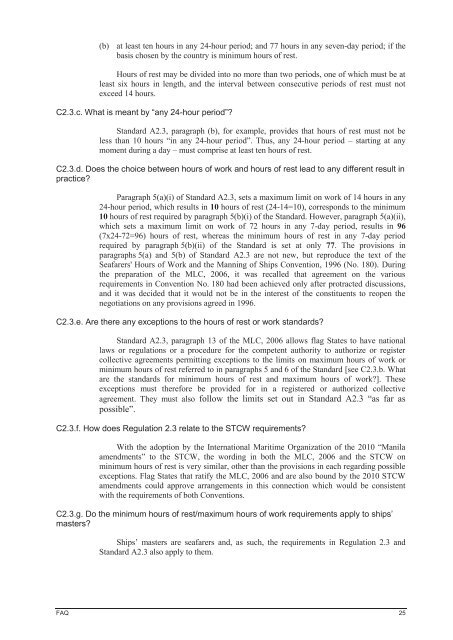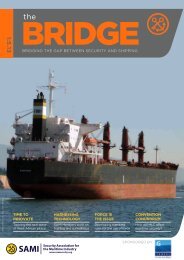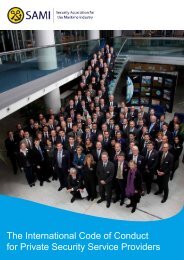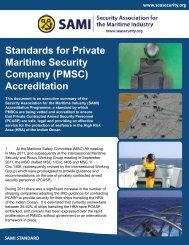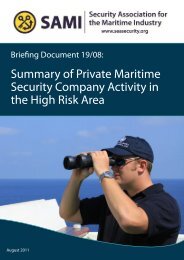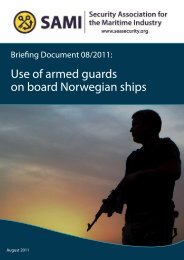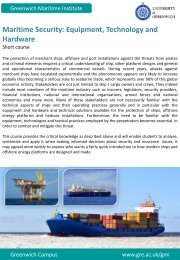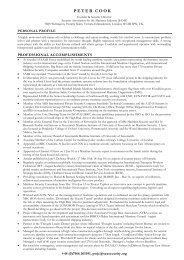SAMI Briefing Maritime Labour Convention FAQs and Text March 2013
SAMI Briefing Maritime Labour Convention FAQs and Text March 2013
SAMI Briefing Maritime Labour Convention FAQs and Text March 2013
You also want an ePaper? Increase the reach of your titles
YUMPU automatically turns print PDFs into web optimized ePapers that Google loves.
(b) at least ten hours in any 24-hour period; <strong>and</strong> 77 hours in any seven-day period; if thebasis chosen by the country is minimum hours of rest.Hours of rest may be divided into no more than two periods, one of which must be atleast six hours in length, <strong>and</strong> the interval between consecutive periods of rest must notexceed 14 hours.C2.3.c. What is meant by “any 24-hour period”?St<strong>and</strong>ard A2.3, paragraph (b), for example, provides that hours of rest must not beless than 10 hours “in any 24-hour period”. Thus, any 24-hour period – starting at anymoment during a day – must comprise at least ten hours of rest.C2.3.d. Does the choice between hours of work <strong>and</strong> hours of rest lead to any different result inpractice?Paragraph 5(a)(i) of St<strong>and</strong>ard A2.3, sets a maximum limit on work of 14 hours in any24-hour period, which results in 10 hours of rest (24-14=10), corresponds to the minimum10 hours of rest required by paragraph 5(b)(i) of the St<strong>and</strong>ard. However, paragraph 5(a)(ii),which sets a maximum limit on work of 72 hours in any 7-day period, results in 96(7x24-72=96) hours of rest, whereas the minimum hours of rest in any 7-day periodrequired by paragraph 5(b)(ii) of the St<strong>and</strong>ard is set at only 77. The provisions inparagraphs 5(a) <strong>and</strong> 5(b) of St<strong>and</strong>ard A2.3 are not new, but reproduce the text of theSeafarers' Hours of Work <strong>and</strong> the Manning of Ships <strong>Convention</strong>, 1996 (No. 180). Duringthe preparation of the MLC, 2006, it was recalled that agreement on the variousrequirements in <strong>Convention</strong> No. 180 had been achieved only after protracted discussions,<strong>and</strong> it was decided that it would not be in the interest of the constituents to reopen thenegotiations on any provisions agreed in 1996.C2.3.e. Are there any exceptions to the hours of rest or work st<strong>and</strong>ards?St<strong>and</strong>ard A2.3, paragraph 13 of the MLC, 2006 allows flag States to have nationallaws or regulations or a procedure for the competent authority to authorize or registercollective agreements permitting exceptions to the limits on maximum hours of work orminimum hours of rest referred to in paragraphs 5 <strong>and</strong> 6 of the St<strong>and</strong>ard [see C2.3.b. Whatare the st<strong>and</strong>ards for minimum hours of rest <strong>and</strong> maximum hours of work?]. Theseexceptions must therefore be provided for in a registered or authorized collectiveagreement. They must also follow the limits set out in St<strong>and</strong>ard A2.3 “as far aspossible”.C2.3.f. How does Regulation 2.3 relate to the STCW requirements?With the adoption by the International <strong>Maritime</strong> Organization of the 2010 “Manilaamendments” to the STCW, the wording in both the MLC, 2006 <strong>and</strong> the STCW onminimum hours of rest is very similar, other than the provisions in each regarding possibleexceptions. Flag States that ratify the MLC, 2006 <strong>and</strong> are also bound by the 2010 STCWamendments could approve arrangements in this connection which would be consistentwith the requirements of both <strong>Convention</strong>s.C2.3.g. Do the minimum hours of rest/maximum hours of work requirements apply to ships’masters?Ships’ masters are seafarers <strong>and</strong>, as such, the requirements in Regulation 2.3 <strong>and</strong>St<strong>and</strong>ard A2.3 also apply to them.FAQ 25


